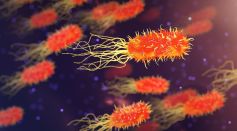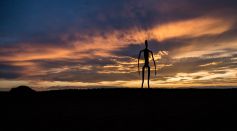Tags: Cornell University

Micro-Robotic Swimmers Inspired by Bacteria, Sperm Cells Could One Day Be Used For Targeted Drug Delivery
Cell ‘Membrane on a Chip’ Developed for Screening of Coronavirus Drug Candidates

Scientists Plan to Study Dead Stars and Exoplanets to Look for Fingerprints and Other Signs of Life
Optical Lace Material Helps Soft Robots React to Their Environment
Scientists Create Living, Eating, Growing Machines
Supernovae Dust ‘Goldmine’ Found at the Center of the Milky Way
Striking It Rich in Supernovae Dust at the Center of the Milky Way Galaxy
Most Popular

Relativity Time Dilation Explained: The Physics of Time and Why It Moves Differently in Space

How AI Is Used in Weather Prediction: Smarter Forecasting Through Machine Learning

How Lightning Science Reveals Why Charged Storms Are Rising with Global Warming Effects

De-Extinction vs. Conservation Science: Which Approach Protects Biodiversity Most Effectively?





